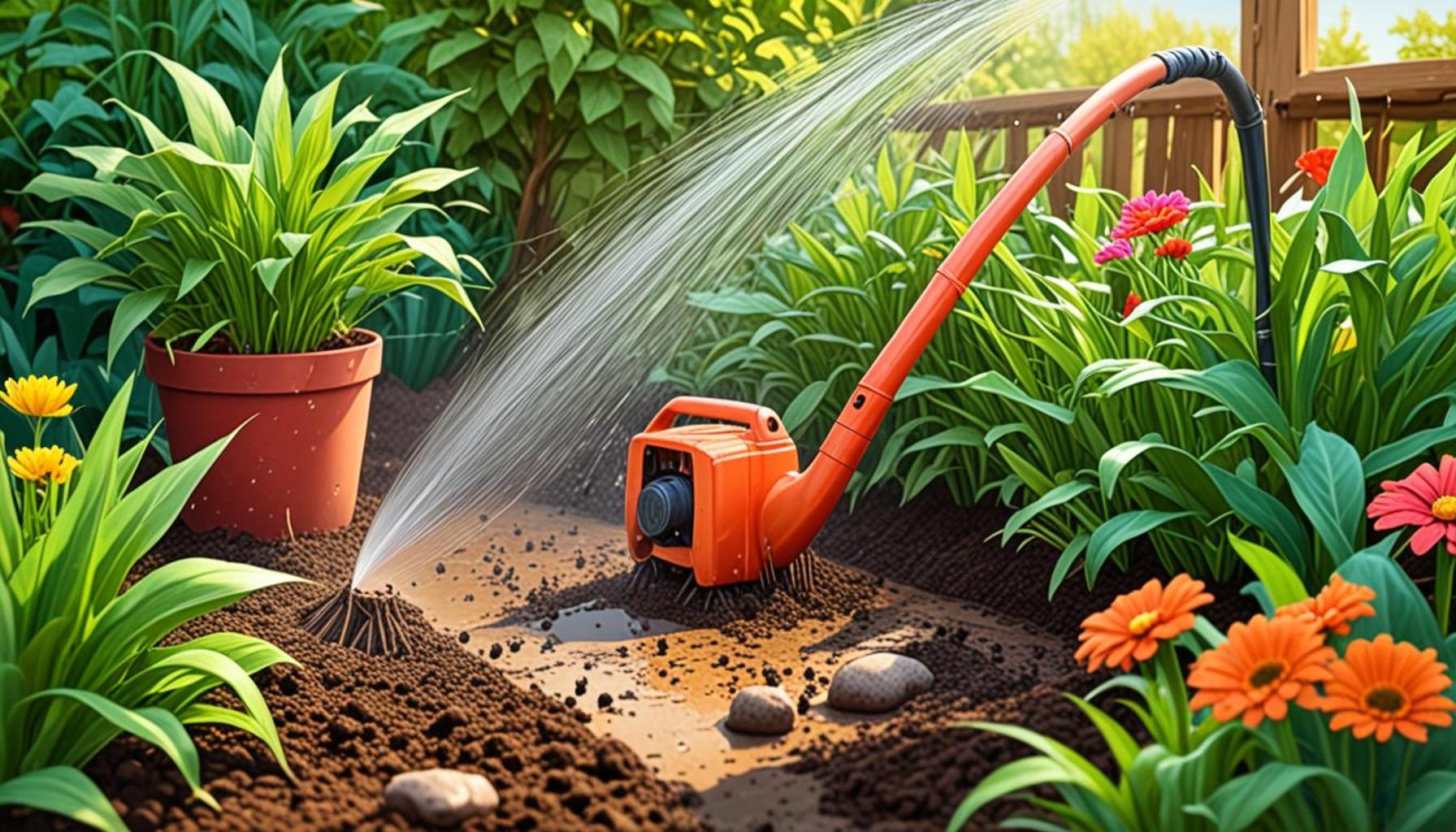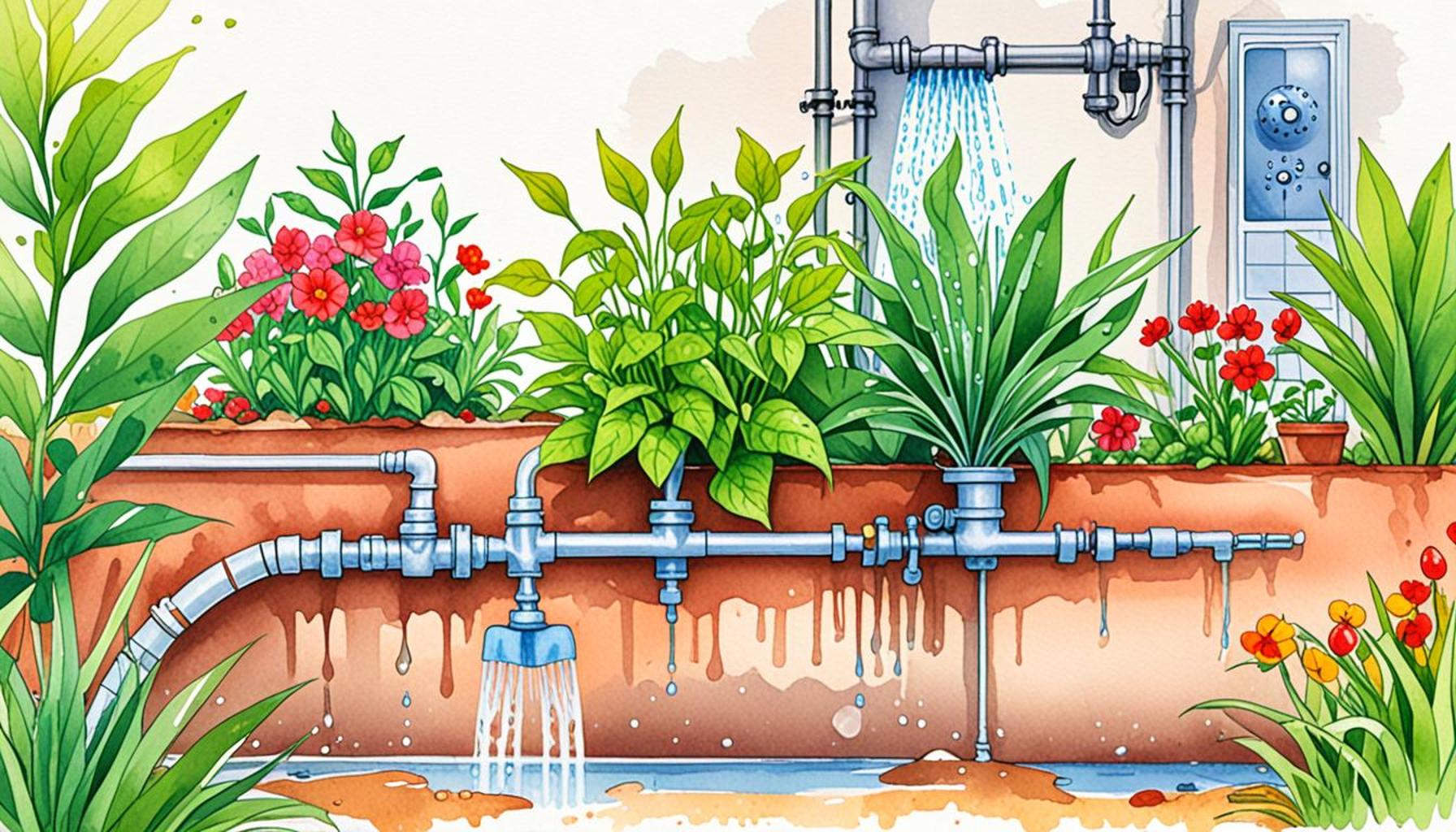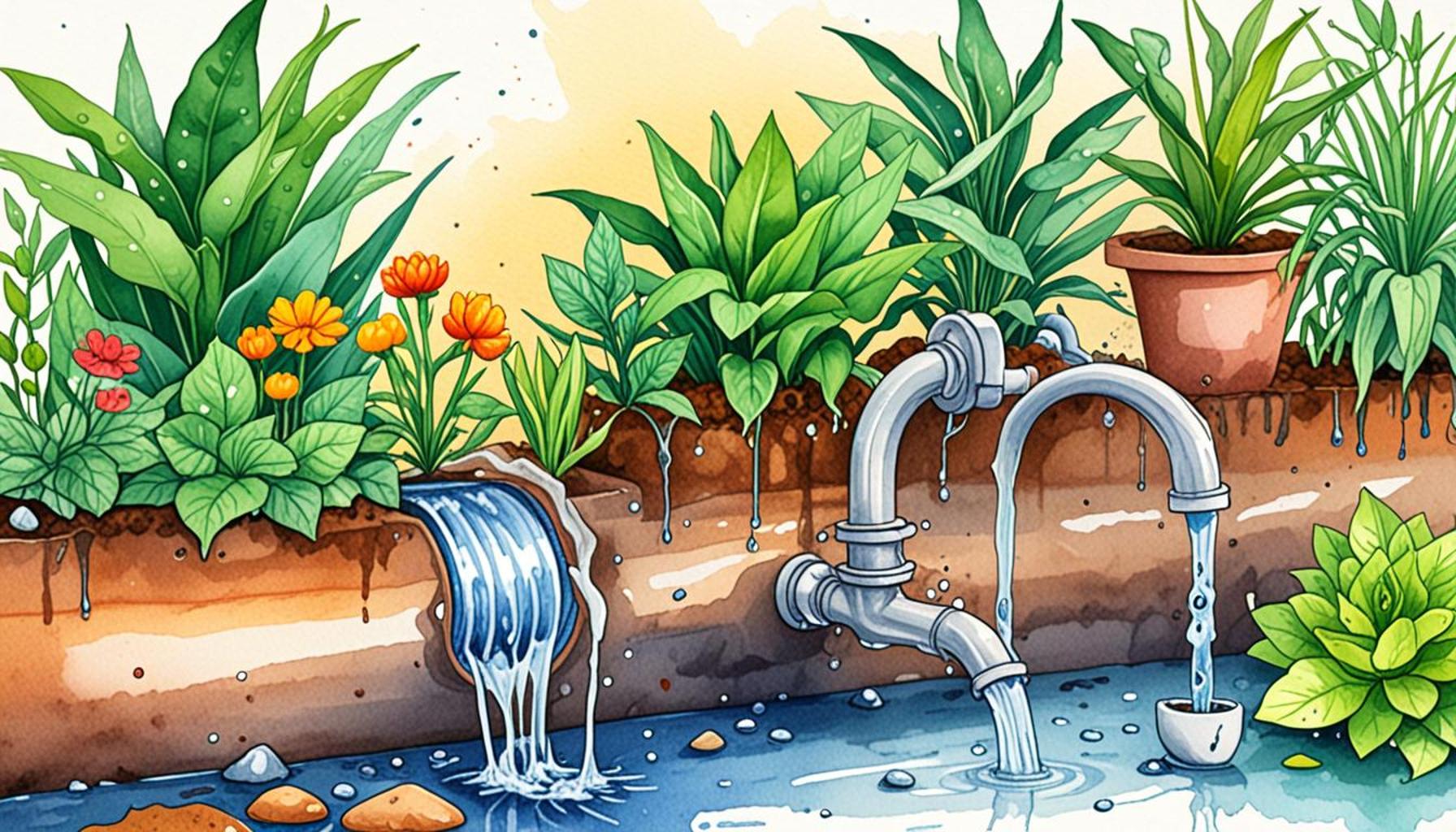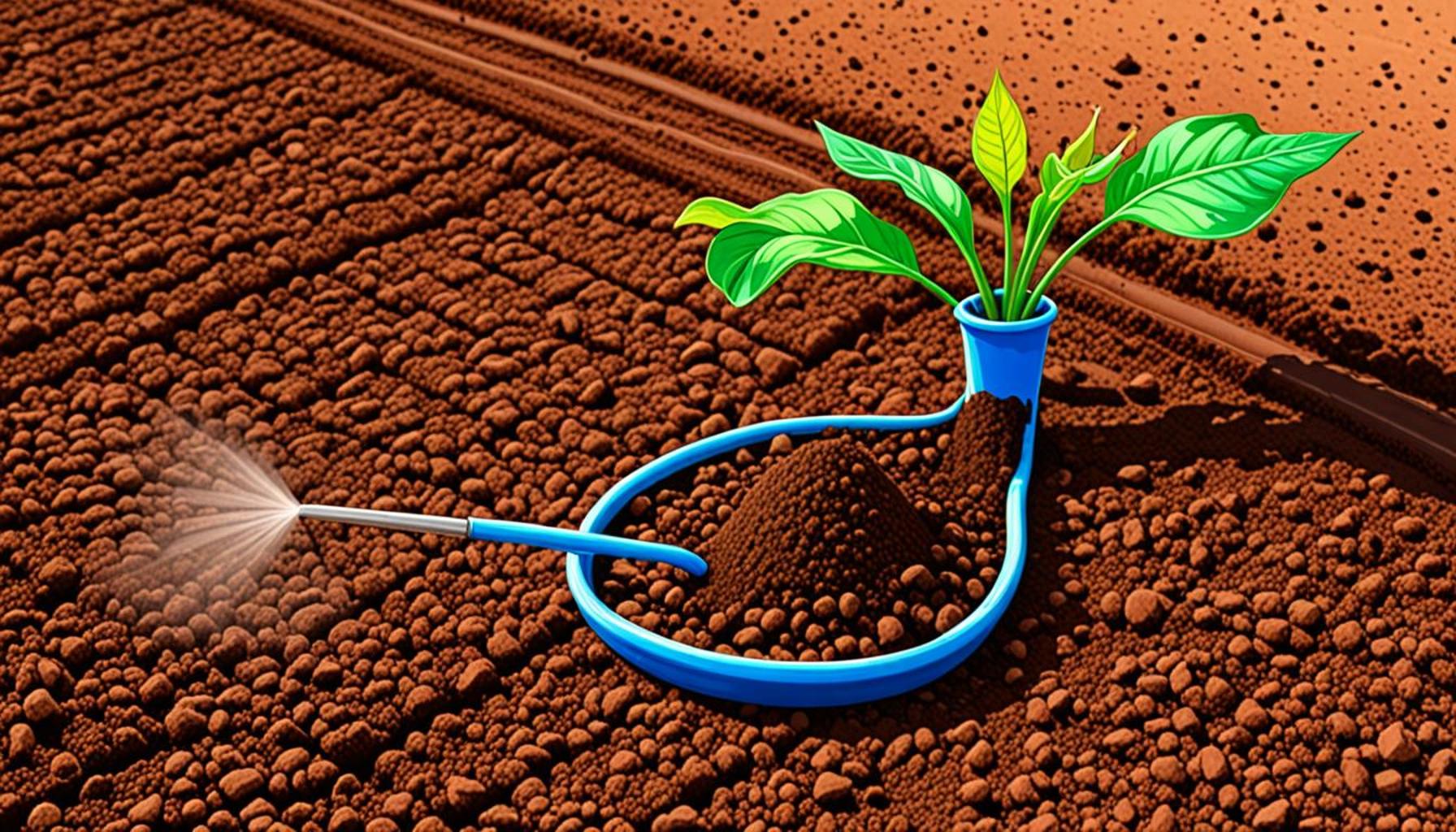The Importance of Proper Irrigation for Beginner Gardeners

Understanding the Role of Irrigation in Gardening
One of the most crucial aspects of gardening that can dictate the success or failure of your plants is proper irrigation. For beginner gardeners, mastering the art of watering goes beyond merely splashing some water on the soil. It encompasses a variety of considerations that directly influence plant health and yield. In this exploration of irrigation, we’ll break down essential factors and provide practical insights that every aspiring gardener should understand.
Why is Irrigation Key?
Water may appear to be an uncomplicated requirement for plant growth, yet it involves a nuanced understanding of various elements. Here are some essential points to consider:
- Plant Needs: Different plants have distinct water requirements. For instance, succulents thrive in dry conditions, while leafy greens like lettuce and spinach are more water-dependent. Recognizing these differences ensures that you provide each plant with the right amount of moisture.
- Soil Type: The type of soil in your garden directly affects drainage and moisture retention. Clay soils tend to hold water longer, which may lead to overwatering, whereas sandy soils drain quickly and might require frequent watering.
- Climate Conditions: Seasonal changes can dramatically affect how often and how much you should water. In hotter months, you may need to water daily, while during cooler seasons, a weekly schedule might suffice.
Timing and technique play a pivotal role in efficient irrigation. Watering at the right time—ideally early in the morning or late in the afternoon—can minimize evaporation and ensure that more water reaches the roots. Additionally, employing techniques such as drip irrigation can deliver water directly to the soil, reducing wastage and promoting a healthier garden.
The Consequences of Improper Irrigation
Failing to grasp the principles of irrigation can lead to detrimental outcomes:
- Overwatering: This common mistake can lead to root rot, mold, and even unhealthy plant growth. Signs include yellowing leaves and a general decline in vigor.
- Underwatering: Insufficient water supply results in stress for plants, making them more susceptible to pests and diseases. Stunted growth and wilting are significant indicators of underwatered plants.
- Water Waste: Inefficient watering practices not only impact your plants but can also lead to unnecessary increases in your water bill and contribute to broader environmental issues such as drought.
As you deepen your understanding of irrigation, remember that the right practices can establish a thriving garden environment. Explore various irrigation methods and tools—such as oscillating sprinklers or moisture sensors—that can enhance your gardening experience. In upcoming sections, we will uncover specific irrigation techniques and their benefits, equipping you with knowledge to cultivate a lush, sustainable garden.
LEARN MORE: Click here to discover how to harness rainwater for your garden
Essential Elements of Efficient Irrigation
A well-timed watering routine is central to any successful garden. As a beginner gardener, understanding the fundamentals of efficient irrigation will lay the foundation for healthy plant growth. Achieving the right balance in irrigation is essential, and several components come into play—each worthy of exploration to ensure you’re on the right path in your gardening journey.
Understanding Water Requirements
The cornerstone of any effective irrigation strategy is recognizing that not all plants are created equal when it comes to their water needs. Familiarizing yourself with the water requirements of the plants you choose to cultivate is paramount. Some plants, like zucchini and tomatoes, require consistent moisture, while others, such as lavender and rosemary, prefer drier conditions. Tailoring your watering schedule according to the specific needs of your plants can prevent issues that arise from either excess water or inadequate moisture.
The Role of Soil in Water Retention
The efficacy of your irrigation practices is also influenced significantly by the soil type in your garden. Understanding how different soils function will help optimize your watering strategy:
- Sandy Soil: Known for good drainage, sandy soil dries out rapidly and may require more frequent watering, especially during dry spells.
- Clay Soil: While it can retain moisture well, it also risks waterlogging. This type of soil might need less frequent watering, but be cautious not to underestimate the needs of your plants.
- Silt Soil: This is a balanced soil type that retains moisture well. It usually strikes a good balance between sand and clay, making it easier to maintain an effective watering routine.
In addition to these soil types, consider the soil structure and organic matter content, which can enhance water retention and nutrient availability. By taking the time to learn about your soil, you can proactively adjust your watering schedule and methods to align with its unique properties.
Embracing Climate and Seasonal Changes
Another area deserving attention is how your local climate and seasonal variations affect watering needs. Regions with high heat and low humidity levels may necessitate different irrigation strategies compared to cooler, temperate climates. During summer months, it is common for plants to experience increased stress due to heat, while spring and fall may offer more forgiving conditions. Adapting your watering frequency and volume according to these seasonal shifts will ensure that your garden remains robust and productive throughout the year.
To sum up, mastering the elements of efficient irrigation will provide a solid base for your gardening endeavors. By acknowledging the uniqueness of your plants, soil, and climate, you’re positioning yourself for success, enabling you to cultivate a lush, thriving garden. In subsequent sections, we will dive deeper into specific irrigation methods and strategies tailored for beginners, equipping you with the knowledge to make informed decisions.
| Advantage | Details |
|---|---|
| Water Efficiency | Proper irrigation prevents water wastage, ensuring each plant receives just the right amount needed for optimal growth. |
| Improved Plant Health | Consistent and appropriate watering can reduce the risk of disease and promote vigorous growth, making your garden thriving. |
Understanding the significance of efficient irrigation methods is vital for newbie gardeners. With proper technique, they can create a sustainable environment that not only supports their plants but also contributes to water conservation efforts. Implementing rainfall capture systems or drip irrigation not only promotes healthy plant growth but also cultivates a sense of responsibility towards natural resources.Moreover, beginners should note that overwatering can lead to root rot and other critical issues. By utilizing soil moisture sensors or simple techniques like the finger test, they can ascertain when their plants truly need water. Engaging in these watering practices will instill confidence in their gardening journey while ensuring that each seed sown has the opportunity to flourish. Additionally, utilizing mulch in garden beds can help retain soil moisture, further supporting efficient irrigation strategies. By exploring these methods, novice gardeners will not only enhance their learning but also create flourishing landscapes that invite curiosity and appreciation for the art of gardening.
DISCOVER MORE: Click here to dive deeper
Choosing the Right Irrigation Methods
Once you’ve grasped the basics of your plants’ water requirements, soil characteristics, and regional climate patterns, the next critical step in efficient irrigation is selecting the right irrigation methods. Different gardening methods and technologies can significantly influence how effectively you provide water to your plants, making it essential for beginner gardeners to explore their options.
Traditional Watering Techniques
For many beginner gardeners, traditional watering methods such as watering cans or hoses are familiar and accessible. These methods allow for precise control over the amount of water applied and can be suitable for small gardens or potted plants. The key is to water at the base of the plants, which targets the roots directly and minimizes water waste. Watering early in the morning or late in the evening can also reduce evaporation, ensuring that your plants benefit from every drop.
Drip Irrigation Systems
For those looking to take a more advanced approach, drip irrigation systems offer an efficient way to deliver water directly to plant roots. This method involves a network of tubes and emitters that release water slowly, minimizing evaporation and runoff. Drip systems are particularly useful for vegetable gardens and flower beds, as they maintain consistent moisture levels and can be automated to fit various schedules. Beginner gardeners can start small with drip irrigation kits readily available at gardening stores, allowing them to gauge their effectiveness without a significant upfront investment.
Sprinkler Systems
Sprinklers are another popular choice for larger gardens, as they can cover significant areas. When selecting a sprinkler, consider whether a stationary unit or a rotating model better suits your garden’s layout. Keep in mind that although sprinklers can efficiently cover broad spaces, they may lead to water wastage through evaporation and runoff if used during peak heat hours. A simple solution is to use sprays or oscillating sprinklers to ensure that your watering evenly targets the garden beds and avoids unnecessary water loss.
Rainwater Harvesting
Incorporating rainwater harvesting into your irrigation plan can be an eco-friendly and sustainable option. Setting up a rain barrel to collect runoff from rooftops allows gardeners to make the most of natural resources. This water can then be used to irrigate your garden during dry spells, reducing your reliance on tap water and lowering your utility bills. Not only does this practice support water conservation efforts, but it can also lead to healthier plants since rainwater is free of chemicals commonly found in municipal water sources.
Monitoring Soil Moisture
Regardless of the irrigation method chosen, monitoring soil moisture is crucial. Tools such as soil moisture meters or simple finger tests can help determine whether it’s time to water. Overwatering can be just as detrimental as underwatering; therefore, understanding the moisture needs of your garden will optimize your irrigation efforts and promote healthy growth. Investing in a moisture meter can save time and ensure a more efficient watering routine, especially for beginners still learning their plants’ specific needs.
In conclusion, equipping yourself with the right irrigation methods is essential for novice gardeners eager to create thriving outdoor spaces. By exploring a range of options from traditional methods to modern systems and implementing sustainable practices, every gardener can find a strategy that aligns with their gardening goals, ensuring a fruitful and enjoyable experience.
DISCOVER MORE: Click here for essential pest prevention tips
Conclusion: Cultivating Success Through Proper Irrigation
Understanding the importance of proper irrigation is fundamental for beginner gardeners who aspire to cultivate robust and flourishing gardens. The journey begins with recognizing the unique requirements of your plants, as well as the varying water retention capabilities of your soil. By adopting effective irrigation techniques, such as traditional watering methods, drip irrigation systems, and sprinklers, new gardeners can efficiently deliver the right amount of moisture to promote healthy growth.
Moreover, integrating sustainable practices like rainwater harvesting not only conserves valuable resources but also enhances the quality of water available to your plants. As environmental awareness grows, many USDA regions are advocating the use of natural resources, making it even more essential for gardeners across the United States to consider eco-friendly options.
However, it does not end with choosing an irrigation method; continuous monitoring of soil moisture is vital. Investing in tools such as moisture meters can significantly influence watering schedules and ensure your plants thrive without excess or deficit. This nuanced approach will enable beginners to build confidence and knowledge in their gardening practices.
As you embark on your gardening journey, remember that understanding and applying proper irrigation methods will pave the way for your success. Whether nurturing a small herb garden or launching a large vegetable patch, the right irrigation strategy will be your greatest ally. With patience, time, and attention to detail, your garden will flourish, transforming your space into a vibrant oasis.


